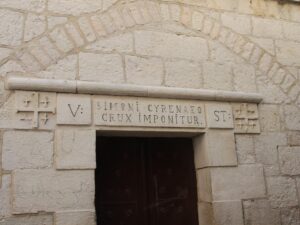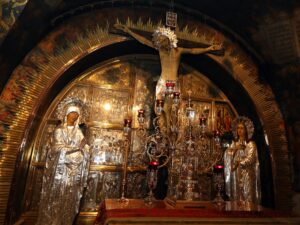Capernaum, located on the northern shore of the Sea of Galilee in Israel, is a significant pilgrimage site revered for its association with Jesus Christ during his ministry in Galilee. Known as Jesus’ “own city” in the Gospel of Matthew, Capernaum holds profound spiritual and historical significance for Christians.
One of the notable features of Capernaum is the remains of an ancient synagogue dating back to the 4th-5th centuries, built upon the foundation of an earlier synagogue where Jesus is believed to have taught. Pilgrims visit this site to reflect on Jesus’ teachings, including the famous sermon on the Bread of Life (John 6), and to pray in the place where Jesus’ ministry was centered.
Another significant site in Capernaum is the House of St. Peter, a site revered as the place where Jesus healed Peter’s mother-in-law (Matthew 8:14-15). This house, along with other nearby archaeological discoveries, offers pilgrims a glimpse into the daily life of Jesus and his disciples during their time in Capernaum.
For pilgrims, visiting Capernaum provides an opportunity to deepen their understanding of Jesus’ teachings and miracles in a setting that evokes the atmosphere of first-century Galilee. It allows believers to walk in the footsteps of Jesus, to pray where he preached, and to encounter the living presence of Christ in the midst of ancient ruins and archaeological excavations.
In essence, Capernaum remains a place of pilgrimage where Christians from around the world come to seek spiritual renewal, to deepen their faith in Jesus Christ, and to reflect on the profound impact of his ministry on the lives of believers throughout history. It stands as a testament to Jesus’ presence and teachings in the Holy Land, inviting pilgrims to draw closer to God and to experience the transformative power of encountering Jesus in the places where he lived and taught.




